Space

Scientists found evidence that a region of northern Mars called Arabia Terra experienced thousands of “super eruptions,” the biggest volcanic eruptions known, over a 500-million-year period. »
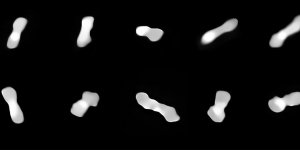
Using the European Southern Observatory’s Very Large Telescope a team of astronomers have obtained the sharpest and most detailed images yet of the asteroid Kleopatra. »
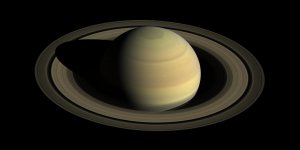
Saturn’s rings aren’t just a beautiful adornment (...). »

A new class of exoplanet very different to our own, but which could support life, has been identified by (...) »

Oxygen rise paved the way for the spectacular diversity of animal life. »
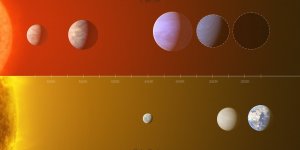
A team of astronomers have used the European Southern Observatory’s Very Large Telescope in Chile to shed new light on planets around a nearby star (...) »

Astronomers have detected the presence of a disc around a planet outside our Solar System for the first time. »

Tantalizing evidence has been uncovered for a mysterious population (...) »

Cosmic dawn, when stars formed for the first time, occurred 250 million to 350 million years after the beginning of the universe, according to a new study. »

A catalyst that destroys perchlorate in water could clean Martian soil. »

Earth's solid-iron inner core is growing faster on one side than the other »

Oxygen levels in the world's temperate freshwater lakes are declining rapidly a trend driven largely by climate change that threatens freshwater biodiversity and drinking water quality. »

The spacecraft flew closer to Jupiter’s largest moon than any other in more than two decades, offering dramatic glimpses of the icy orb. »

The science team is studying the clouds, which arrived earlier and formed higher than expected, to learn more about the Red Planet. »
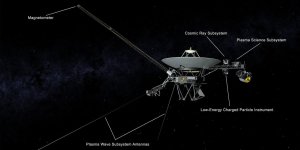
In the sparse collection of atoms that fills interstellar space, Voyager 1 has measured (...) »
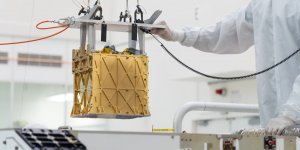
The milestone, which the MOXIE instrument achieved by converting carbon dioxide into oxygen, points the way to future human exploration of the Red Planet. »

The small rotorcraft made history, hovering above Jezero Crater, demonstrating that powered, controlled flight on another planet is possible. »

New observations with the European Southern Observatory’s Very Large Telescope indicate that the rogue comet 2I/Borisov, which is only (...) »

Stars form in stellar eggs, cosmic clouds of gas and dust that collapse due to gravity. »

New measure of ‘Hubble constant’ highlights discrepancy between estimates of our cosmic fate. »

The Event Horizon Telescope collaboration, who produced the first ever image of a black hole, has today revealed a new view of the massive object at (...) »

Scientists have long theorized that supermassive black holes can wander through space—but catching them in the act has proven difficult. »

Transformed from a gaseous planet like Neptune to a hot, rocky world with a poisonous atmosphere, GJ 1132 b shows that planets can undergo drastic physical changes. »

Sparks triggered by friction under normal atmospheric conditions would likely be small. »

For the first time, a wayward comet-like object has been spotted near the family of ancient asteroids. »

NASA’s Mars 2020 Perseverance rover got its first high-definition look around its new home in Jezero Crater on Feb. 21, after rotating its mast, or “head,” 360 degrees, allowing the rover’s Mastcam-Z instrument to capture its first panorama after touching down on the Red Planet on Feb 18. »

Findings suggest the first galaxies in the universe were more massive than previously thought. »

Mission controllers at NASA’s Jet Propulsion Laboratory in Southern California have received the first status report from the Ingenuity Mars Helicopter, (...) »

The chromosphere remains the most mysterious of the Sun’s atmospheric layers. Sandwiched between the bright surface and the ethereal solar corona, the Sun’s outer atmosphere (...) »

The agency’s latest and most complex mission to the Red Planet has touched down at Jezero Crater. Now it’s time to begin testing the health of the rover. »

Using observations from NASA’s Transiting Exoplanet Survey Satellite, an international team of astronomers has discovered a trio of hot worlds larger than Earth. »

Scientists have suggested a new explanation for the abundance in intermediate-mass exoplanets – a long-standing puzzle in astronomy. »

Researchers have detected water vapor ascending to the upper atmosphere of Mars, adding further to the body of evidence that the Red Planet was once partially blue. »

The red dwarf star TRAPPIST-1 is home to the largest group of roughly Earth-size planets ever found in a single stellar system. »

Using a combination of telescopes, astronomers have revealed a system consisting of six exoplanets, five of which are locked in a rare rhythm around their central star. »